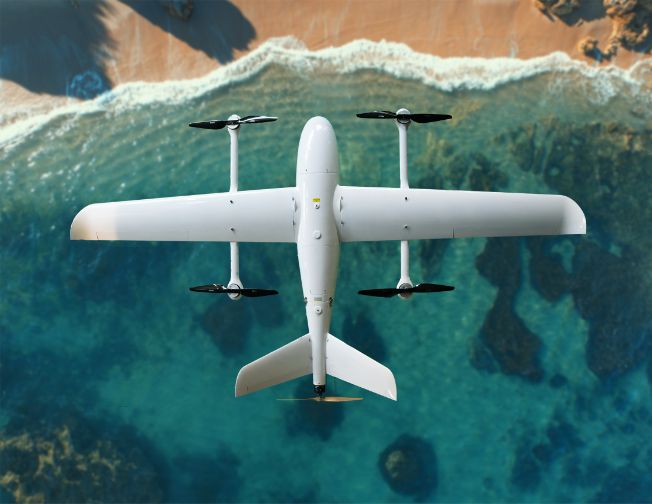The Albanese government has moved quickly to put innovation on the agenda. Research into new technologies – robotics, cyber, AI and quantum – will be a national priority.
But where are the domestic industries that will leverage these innovations, and many more to boot?
Aerospace and advanced air mobility (AAM) is a big player in the future of manufacturing and tech — not to mention, a huge market opportunity that we could miss out on if we don’t invest.
The social benefits of aerospace and AAM are undisputed, particularly for an island country as vast as Australia. We rely on state-of-the-art the aerospace industry to travel and move freight reliably, safely and quickly every day.
But there is a bigger opportunity for our future than mere flight connections.

Picture autonomous lift drones and air taxis that will move parcels and people around quickly with no emissions. Electrified and hydrogen fuel cell aviation that will replace our polluting fuel reliant air travel with quieter zero emissions aircraft. Each new development is driving technology development fundamental for any future technology economy, and that’s why all the countries leading global aerospace development are also the most advanced technology economies.
Australia has all the attributes to be an aerospace and AAM market and supply chain leader. We possess a skilled workforce with the potential for growth, established aerospace pedigree and expertise, a progressive and engaged regulator and, of course, aviation manufacturing, abundant land and air space for testing and world-class R&D capability.
As major players in AAM lock in projects and prepare for the technology to take off, a reliable supply chain is needed. European and US companies are ready to invest, with the aerospace industry in those parts of the world already at capacity.
The EU and US industries are backed by government funding, public private partnership and subsidised infrastructure. For Australia to be competitive in the global civil aerospace and AAM supply chain, we need both government investment and industry collaboration to make it happen.
The AAM industry is expected to hit around $US 45 billion globally by 2030 and investment in aerospace and AAM has a trickle-down effect on economies, jobs and technology capabilities.
In Australia, it could drive massive education and training at both a tertiary and TAFE level, and create skilled employment opportunities for our next generation of young engineers, scientists, designers, analysts, technicians, creators and crafters.
With almost 40 per cent of Australians aged 18–29 thinking of moving overseas in the next year, an Australian AAM industry could keep our talent at home.
We need to build up our national resumé to show we’re capable of reliably meeting demand. Australia has a 50-year record of major civil aviation and aerospace projects.
We are in a space boom right now with a growing and stimulating Australian Space Agency working closely with industry. Australia does not have an equivalent agency for aviation and AAM, and we can already see the impact of this lack of focus and attention.
Our last major defence aerospace project leading to Australian manufacturing jobs was the Joint Strike Fighter (JSF) program.
Without strategic investment in future civil aircraft programs, the people and infrastructure that supported this project will face deconstruction.
We need a national aerospace strategy – just like our new robotics and quantum strategies. Air transport and AAM must be added to the critical industries and technologies lists, where it has been overlooked to date. We need to fund innovation and research in aerospace and AAM to stimulate and promote the opportunities for this future market, provide training opportunities, de-risk and build industry capability now and shine a light on the challenges for the future.
Breaking the mold on traditional research and academia, Australia can learn from overseas, where research plays a key role in the advanced development and research that aerospace demands.
Research isn’t just an academic exercise, nor is it completed in a silo. Without investment in research and innovation in aerospace and AAM, we are missing a huge piece of the value chain that will promote, grow and secure our critical technology capability, create the jobs and economic stimulus of the future, and support multi-billion-dollar exports as an international market.
We need to prove on the global stage that we can come together, leveraging our capabilities, to partner across the country and, ultimately, drive coordinated, competitive bids on an international scale.
To build in Australia, we need to research, develop and design in Australia – and no one organisation or group can do it alone.
Adriano Di Pietro is the director of Swinburne University of Technology’s AIR Hub.
Do you know more? Contact James Riley via Email.

We concur with Bob Whites sentiments.
“To build in Australia, we need to research, develop and design in Australia”.
All very laudable and desirable, but a “strategy”, a report, and throwing government money at it, rarely works. Nor will collaboration centred on the professional “research” sector solve the overall problems.
For example, our software technology is a core component of air traffic management systems in 30+ countries; all developed and owned in Australia. But who would know (or care)? We are an SME so it is impossible to engage with relevant parties who are isolated behind global consulting companies or vendors.
I know that there are many other similar companies in Australia with a the same experience.